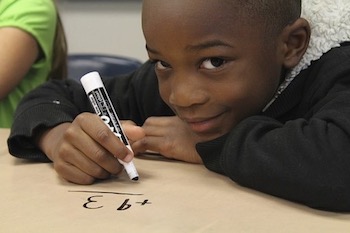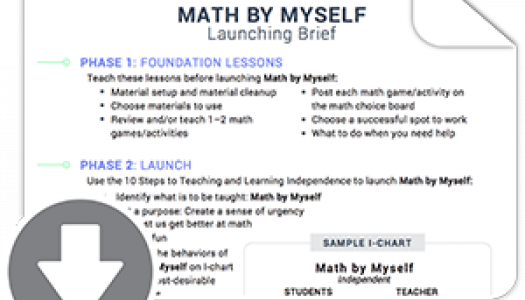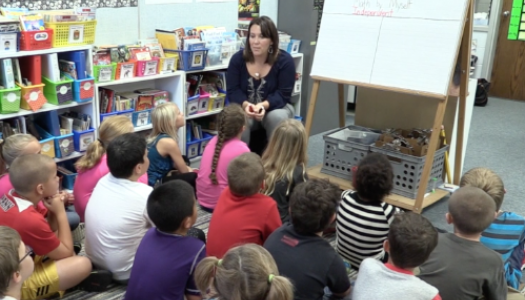What to Do When You Need Math Help
Join Our Community
Access this resource now. Get up to three resources every month for free.
Choose from thousands of articles, lessons, guides, videos, and printables.

As you begin to launch Math Daily 3, one of the foundational lessons of Math by Myself focuses on teaching students what to do when they need help with a math problem. Here is a list of possible strategies you can offer students to aid them when they get stuck. As always, it is important that these strategies be explicitly taught and modeled to students, and that you provide time for practicing independently.
- Ask a Friend for Help: This is pretty straightforward, but as you probably already know, students can quickly misuse this strategy, causing unnecessary distractions in the classroom. In my own experience, I found that it was helpful to identify specific students within the classroom who could be the “math experts” for the day, week, math unit, and so on. Students knew who the “experts” were, because during Math Daily 3 rounds those students put up a fluorescent nameplate in their work space so that they could easily be found during a rotation. This strategy instilled more than academics within my classroom: students were excited to have the chance to be a “math expert” but knew that to have the job they needed to be responsible, and it gave them all the chance for peer-to-peer learning, which is quite powerful.
- Have a “Parking Lot”: Post a piece of chart paper or have a section of whiteboard space where students can write their name to indicate that they are stuck on a certain concept or problem. You will be able to easily see this list and can pull aside students when time permits to support them. I have found that it is best to teach students that they should attempt to use other strategies before they decide to use this one, because it is not possible to pull aside these students regularly while also conferring with scheduled small groups and individuals.
- Turn the Problem into Math Writing: Teach students that they can write about where they are getting stuck, including their thinking about what the problem is asking and what they have tried to do to solve it. They could bring this Math Writing to their conferring session, where they will get support.
- Use a Classroom Anchor Chart: In my own classroom, I regularly used Number Talks (a problem students solve mentally, without paper and pencil) to launch each daily lesson, and whenever possible, this problem related to the concept taught for the day. Instead of using the whiteboard or Smartboard, I recorded the Number Talk and the student responses on chart paper so that this work could be posted in the classroom and referenced later. Teaching students to refer to these charts is a great way for them to make sense of the learning, and because students will have shared multiple strategies for solving a particular problem, it will give them options for how they might approach the problem they are trying to solve.
- Skip That Particular Problem, Return to It Later: This strategy is pretty self-explanatory. You can teach students that if they get stuck, they can move on to another problem and return to the problems they were uncertain about later. If they do this and are still stuck, they can try one of the other strategies listed.
- Teach Students about Mathematical Practice 1: Make Sense of Problems and Persevere in Solving Them: This is a powerful way for students to begin to think about the process and to begin to problem solve. When students are taught ways to support themselves in how to plan their process, solve the problem, and check their answer, amazing learning takes place. Here are some questions you can teach students to ask themselves when they begin a mathematical problem:
- Where can I jump into this problem? Another way of saying this could be What’s my entry point?
- Is there a math tool in my tool kit that would help me make sense of this problem?
- Is there another way to restate this problem?
- What is this problem asking me to do?
- Are there any key words or phrases that help me see what the problem is asking?
Having so many options in place helps students develop the grit and perseverance they need to stick with problems they might otherwise be tempted to abandon.







